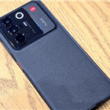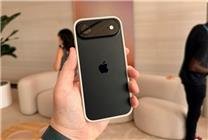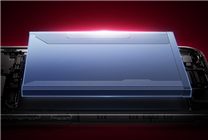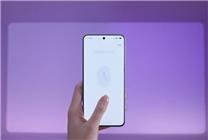Apple vs. Huawei: The Race for Ultra-Thin eSIM Smartphones
Summary:
- Apple’s iPhone Air debuts with a groundbreaking 5.6mm thickness, raising the bar for smartphone design.
- Huawei prepares to launch its own ultra-thin model featuring eSIM technology and a new Kirin 9030 chip.
- The implementation and adoption of eSIM could redefine the smartphone industry, promoting a more compact design.
Introduction
Apple has made a significant advancement in smartphone design with the launch of the iPhone Air. This model stands out due to its remarkably thin body, measuring just 5.6mm in thickness. This achievement not only enhances the aesthetic appeal of the device but also sets a new standard in the industry for smartphone dimensions.
The eSIM Revolution
By incorporating advanced space-optimizing components like eSIM technology, the iPhone Air has garnered immense anticipation. However, the rollout in certain markets, particularly in the domestic sphere, has been delayed because of slow eSIM adoption rates. Consequently, Apple has yet to showcase the iPhone Air in physical retail locations, leaving many eager consumers waiting.
In parallel, Huawei is strategically positioning itself in the ultra-thin smartphone market. Reports indicate that Huawei is not only adopting eSIM technology but also primed to launch its new Kirin 9030 chip. This combination aims to strike a balance between lightweight design and enhanced performance, appealing to users who prioritize both style and functionality.
The Future of Connectivity
Huawei has already introduced information regarding eSIM services through its mini-program "Skyline GO," currently in testing. This program is anticipated to launch in the third quarter of 2025, indicating Huawei’s commitment to aligning with the ongoing trends in mobile technology.
One of the key advantages of eSIM technology is its elimination of physical SIM card slots, allowing for a more streamlined device design. For example, the U.S. version of the iPhone 17 Pro has removed the physical SIM slot, resulting in a 4252mAh battery capacity—265mAh more than the Chinese variant. Moreover, integrating advanced battery technology and fast charging into domestic models could further improve battery performance significantly.
Competitive Landscape
The race between Apple and Huawei highlights not just a competition of design and specifications, but also an exploration into the future of communication technology. The potential shift toward eSIM could lessen users’ reliance on physical SIM cards while paving the way for devices that are both compact and efficient.
However, the actualization of eSIM technology faces hurdles such as carrier coordination and service maturity, particularly in domestic markets. Huawei’s proactive approach may provide an opportunity for domestic manufacturers to excel in this evolving landscape. As Apple delays the iPhone Air’s domestic launch, Huawei could capitalize on the situation to generate interest and momentum for its innovative models.
Conclusion
As the smartphone market evolves, the competition between Apple and Huawei stands to reshape consumer expectations regarding design, functionality, and connectivity. The race to create ultra-thin smartphones with long-lasting batteries not only influences consumer choice but also significantly impacts the competitive dynamics of the high-end market.
The next year may witness a pivotal shift in who establishes leadership in ultra-thin design and performance. With the focus on eSIM technology and innovative hardware, both companies are poised to redefine what users expect from their mobile devices. As this technological race unfolds, it reminds us of the relentless pursuit of innovation that propels the industry forward, promising exciting new horizons for consumers.









